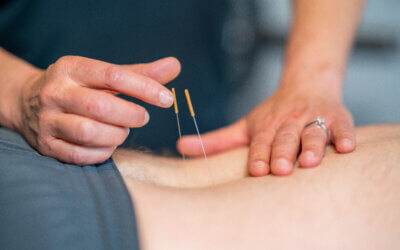Even if you’ve never had sciatica, it’s a condition you should be aware of. Studies show that up to 40% of people could develop this painful back condition in their lifetime. The high likelihood of developing this condition should encourage you to find out everything you can about it.
Physical therapists are a group of medical professionals who know a lot about sciatica. These specialists can verify if your symptoms are consistent with sciatica. They can help you find effective treatment options for sciatica as well.
What are three common symptoms of sciatica that could cause you to seek treatment?
When sciatica patients come to physical therapy, there are three symptoms that have commonly driven them to seek treatment. These three symptoms are:
- Pain — This condition leads to a pain that’s often described as burning or shocking. Typically, the pain starts in the lower back and runs down one leg. It can also get worse when you do certain movements that involve the lower back or affected leg.
- Muscle weakness — Sciatica is often caused by a pinching of the sciatic nerve. This pinching can weaken the nerve signals being sent to muscles in the affected leg. In turn, it can feel like the muscles in your affected leg are weaker than normal.
- Odd nerve sensations — The pinching or irritation of your sciatic nerve can lead to odd nerve sensations as well. Some patients might experience tingling or pins-and-needles sensations in the lower back or affected limb. Others could feel numbness in the same areas.
Three treatments used for sciatica symptoms
Physical therapy is an effective treatment option for sciatica symptoms. One medical study reports that 79% of the participants receiving physical therapy reported significant improvements in their sciatica symptoms. This high level of success is partly due to the many therapy options that can benefit this condition. Three of the most beneficial therapy methods for treating sciatic are:
- Therapeutic exercises — It might seem odd, but moving in specific ways can help treat sciatica symptoms. Physical therapists can show you how to do therapeutic exercises. These exercises can help stretch and strengthen your back. They can help reduce sciatica symptoms as well. A medical study that used therapeutic exercise to treat sciatica reports that participants showed significant symptoms improvement in about five sessions.
- Instrument assisted soft tissue mobilization (IASTM) — This therapy technique involves therapists using specially designed tools to place therapeutic pressure on the painful area. One study reports that IASTM was able to significantly reduce lower back and leg pain in four to six weeks.
- Manual therapy — This is a category of therapy techniques where therapists use their hands to move and manipulate soft tissue or joints. One manual therapy method that can help with sciatica pain is myofascial release. A study on this technique reports that participants who experienced this technique had an almost 63% reduction in lower back pain after four weeks.
Find out more about sciatica symptoms and treatment options at Continuum Wellness
Do you want to find out more about sciatica symptoms and treatments? Our team of physical therapists at Continuum Wellness is ready and willing to help you. Our clinic offers free screenings to help you begin your therapy process. We’ll then use the information gathered in your screening to build you a personalized sciatica treatment plan.
Take the next steps to start getting our help with your sciatica. Contact our team today for more information or to schedule an initial appointment.



